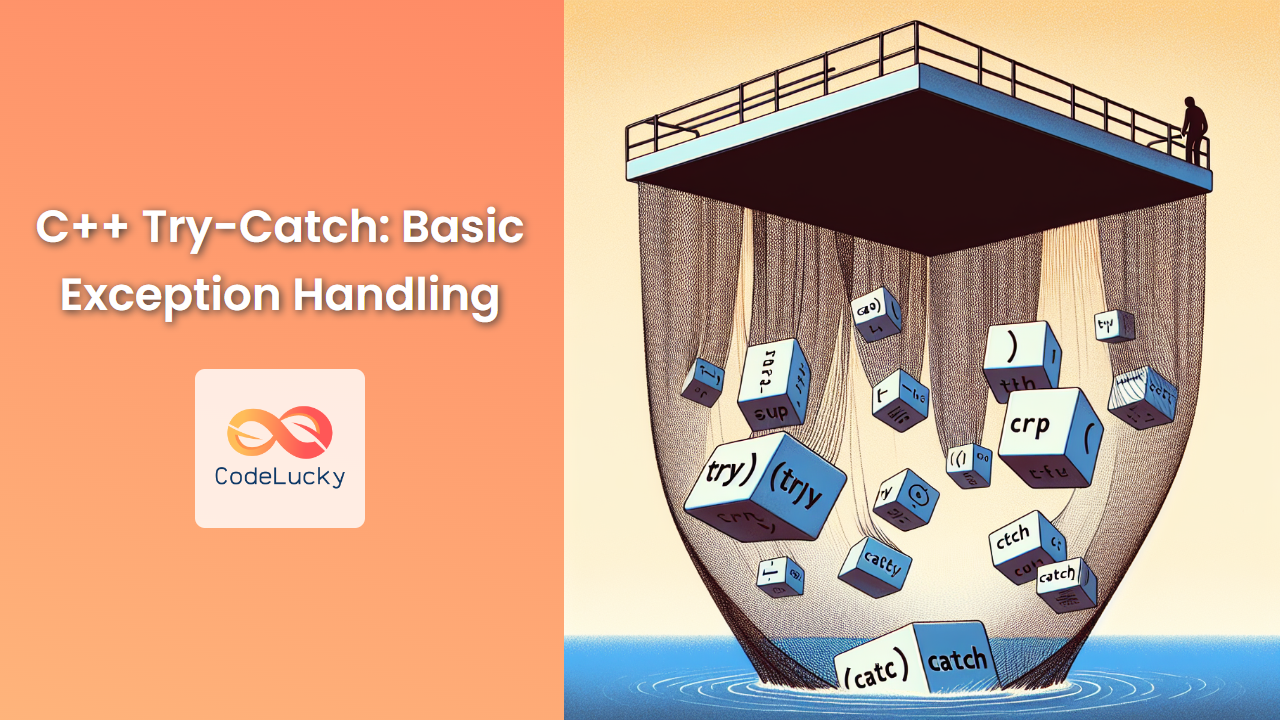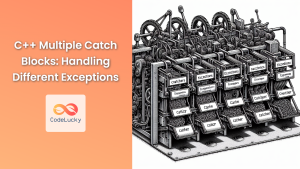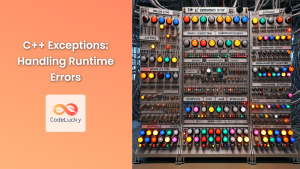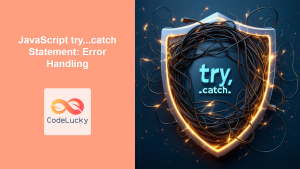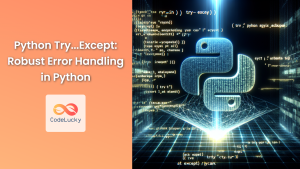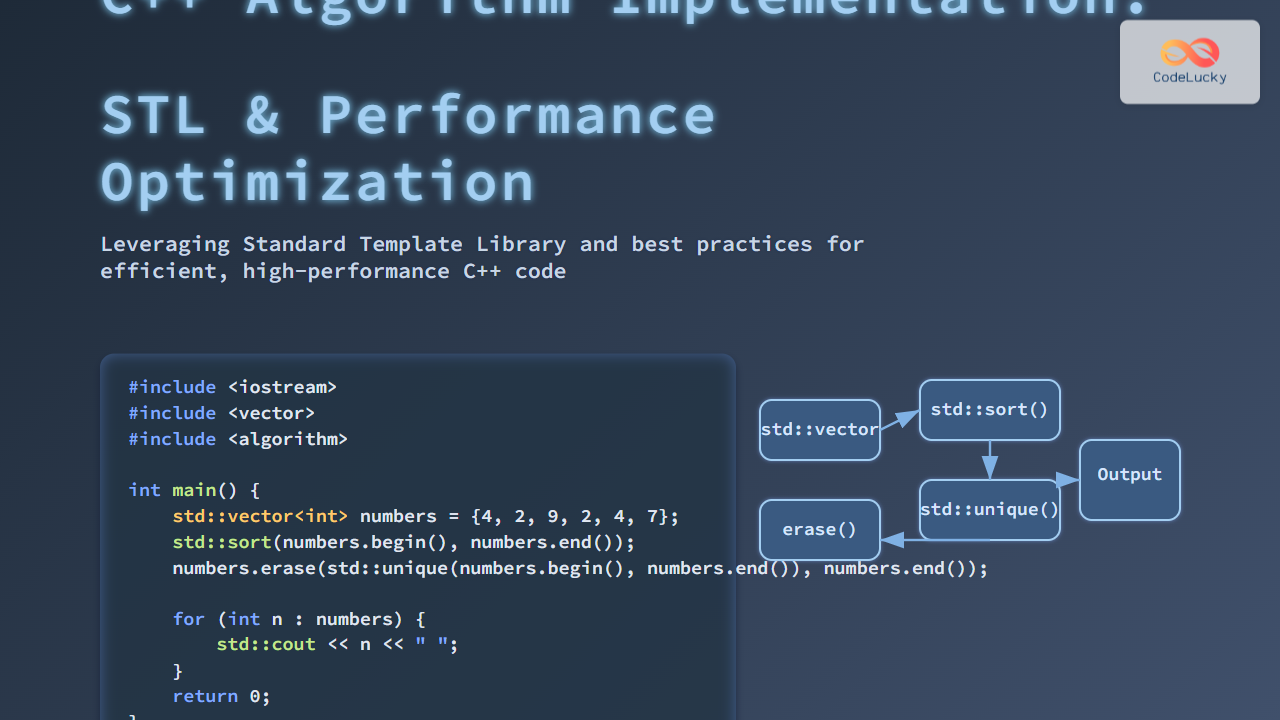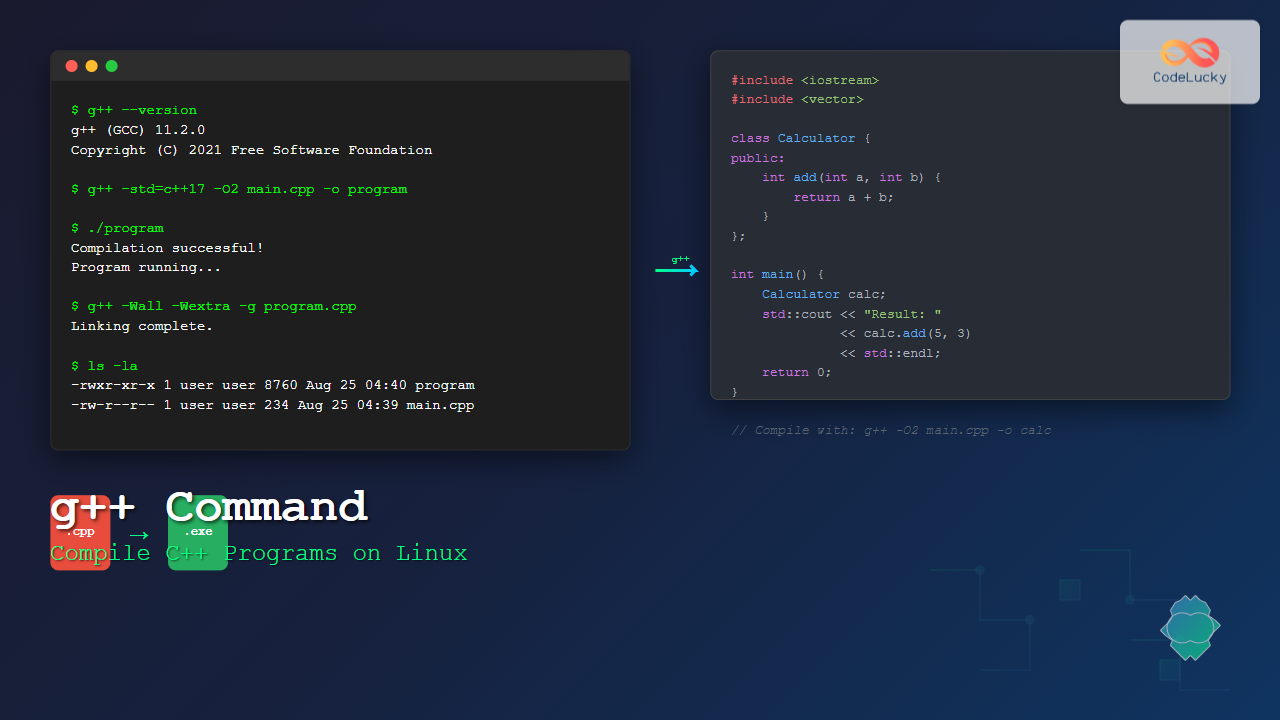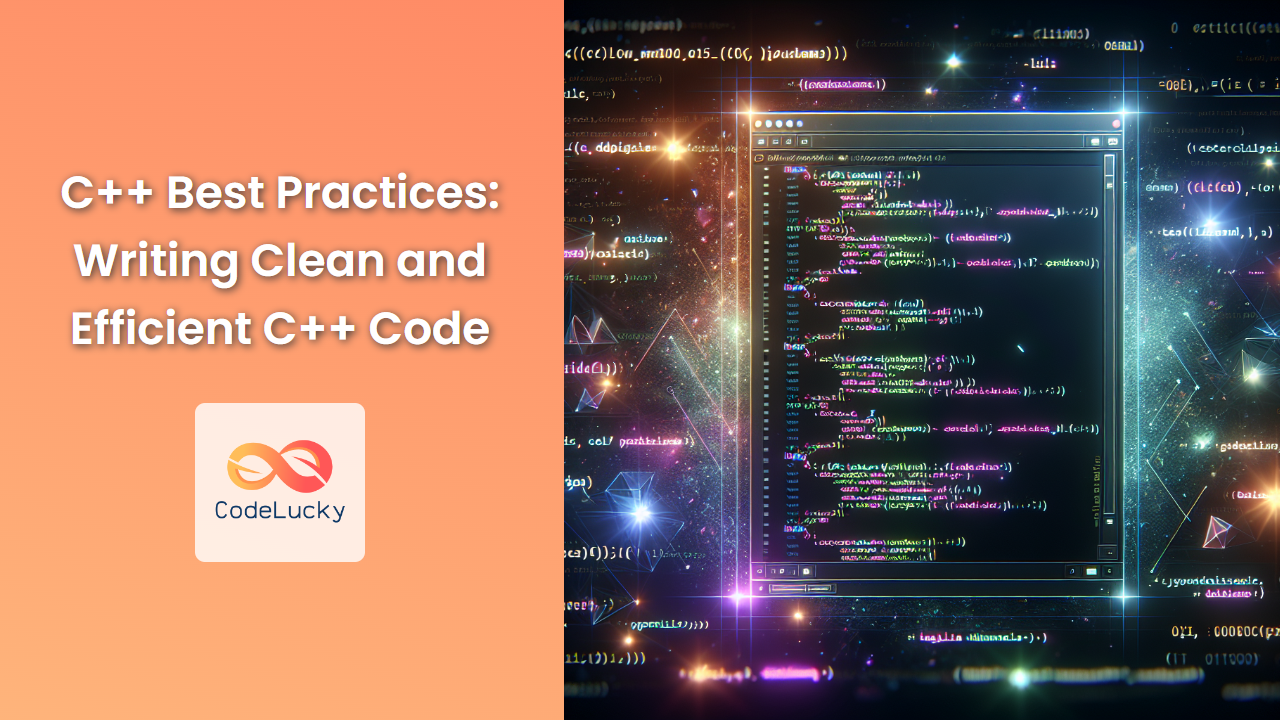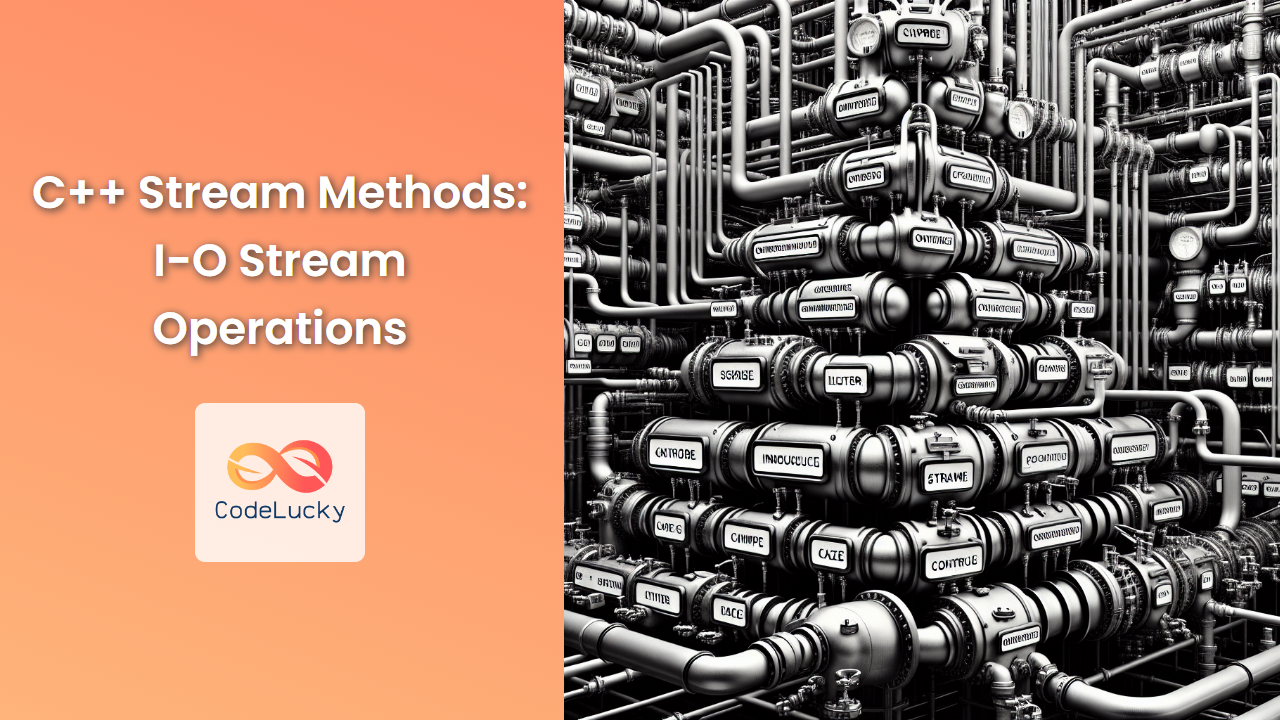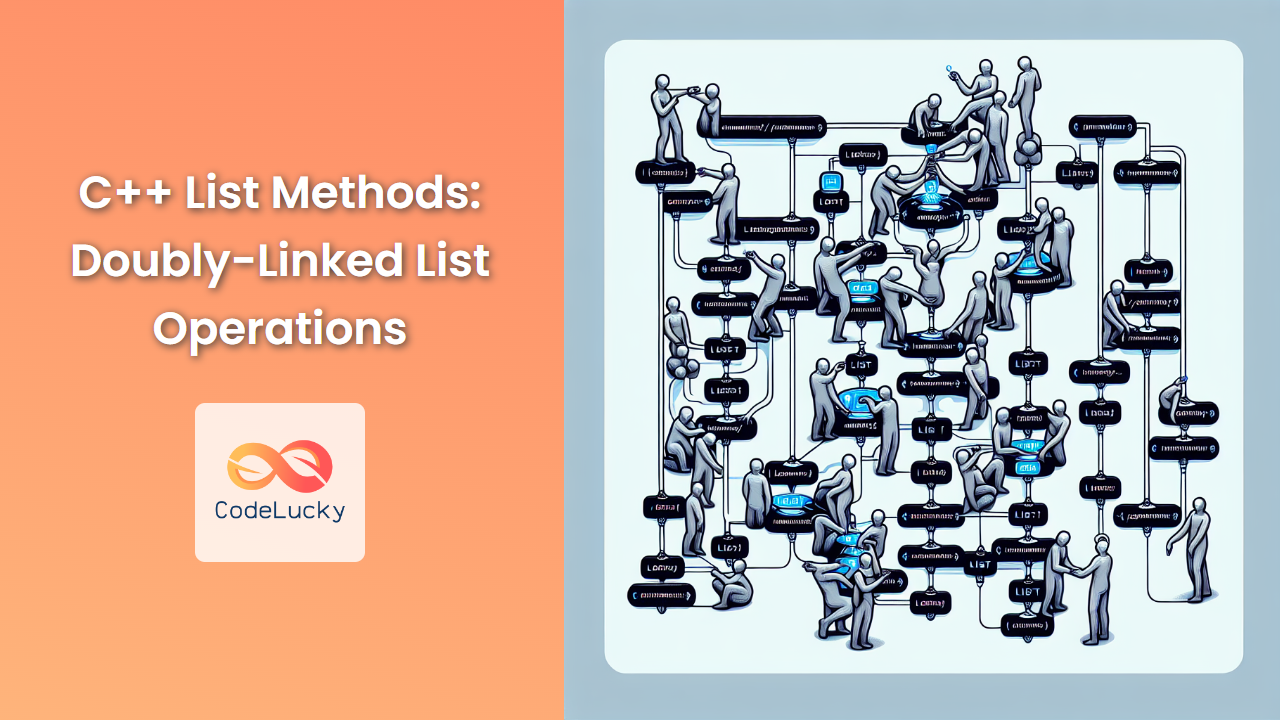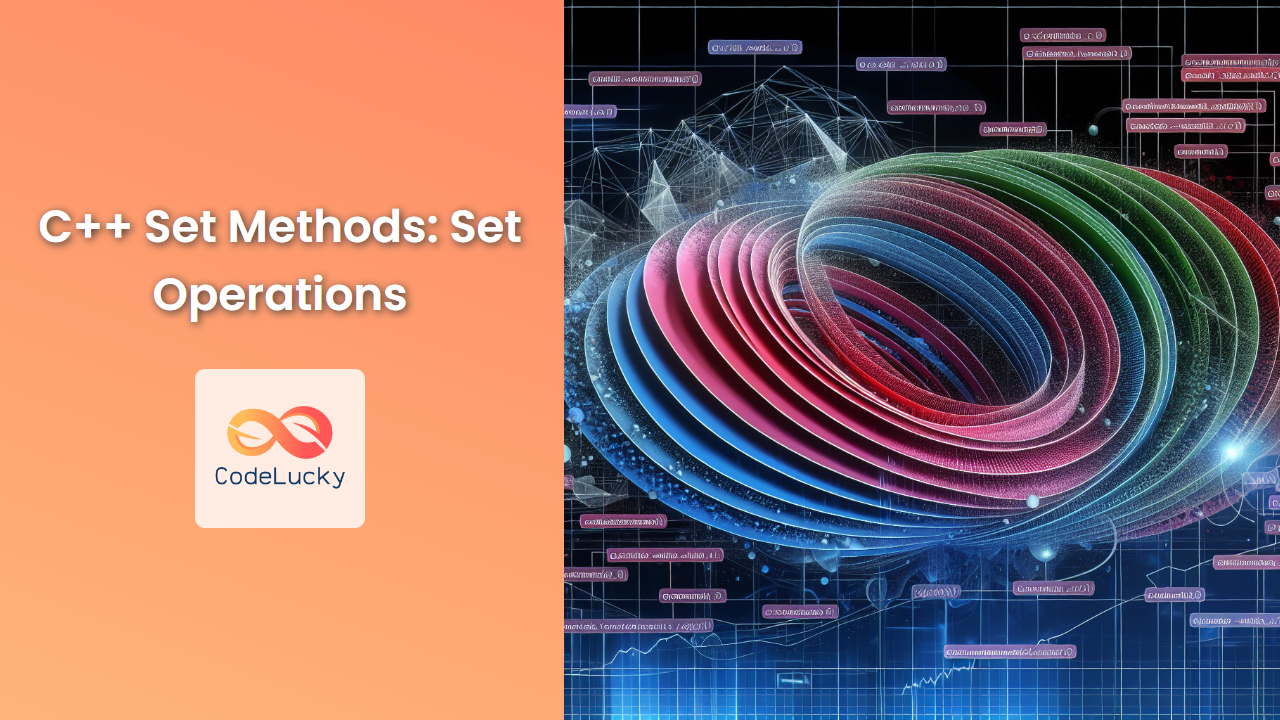In the world of C++ programming, errors are inevitable. Whether it's a division by zero, an out-of-bounds array access, or an unexpected user input, your program needs to be prepared to handle these situations gracefully. This is where exception handling comes into play, and the primary tool for this in C++ is the try-catch block.
Understanding the Basics of Try-Catch
The try-catch mechanism in C++ provides a structured and clean way to handle errors. It allows you to separate the normal flow of your program from the error-handling code, making your software more robust and easier to maintain.
🔍 Here's the basic syntax of a try-catch block:
try {
// Code that might throw an exception
} catch (ExceptionType e) {
// Code to handle the exception
}
Let's break this down:
- The
tryblock contains the code that might throw an exception. - The
catchblock specifies the type of exception it can handle and contains the code to deal with that exception.
A Simple Example: Division by Zero
Let's start with a classic example: division by zero. In mathematics, dividing by zero is undefined, and in C++, it can cause your program to crash if not handled properly.
#include <iostream>
#include <stdexcept>
double divide(double numerator, double denominator) {
if (denominator == 0) {
throw std::runtime_error("Division by zero!");
}
return numerator / denominator;
}
int main() {
try {
std::cout << "Result: " << divide(10, 2) << std::endl;
std::cout << "Result: " << divide(20, 0) << std::endl;
} catch (const std::exception& e) {
std::cerr << "Error: " << e.what() << std::endl;
}
return 0;
}
In this example:
- We define a
dividefunction that checks if the denominator is zero. - If it is, we throw a
std::runtime_errorwith a custom message. - In the
mainfunction, we use a try-catch block to calldividewith different arguments. - The first call (10/2) will succeed, but the second (20/0) will throw an exception.
- The catch block catches any
std::exception(whichstd::runtime_errorinherits from) and prints the error message.
Output:
Result: 5
Error: Division by zero!
💡 This example demonstrates how exception handling allows your program to continue running even when an error occurs, rather than crashing abruptly.
Multiple Catch Blocks
In real-world scenarios, different types of exceptions might be thrown. C++ allows you to have multiple catch blocks to handle different exception types.
#include <iostream>
#include <stdexcept>
#include <string>
void processInput(const std::string& input) {
if (input.empty()) {
throw std::invalid_argument("Input cannot be empty");
}
if (input == "error") {
throw std::runtime_error("Error string detected");
}
std::cout << "Processing: " << input << std::endl;
}
int main() {
std::string inputs[] = {"hello", "", "error", "world"};
for (const auto& input : inputs) {
try {
processInput(input);
} catch (const std::invalid_argument& e) {
std::cerr << "Invalid Argument: " << e.what() << std::endl;
} catch (const std::runtime_error& e) {
std::cerr << "Runtime Error: " << e.what() << std::endl;
} catch (...) {
std::cerr << "Unknown exception caught" << std::endl;
}
}
return 0;
}
In this example:
- We have a
processInputfunction that can throw different types of exceptions based on the input. - In the main function, we loop through an array of inputs, calling
processInputfor each. - We have multiple catch blocks to handle different exception types.
- The last catch block
catch (...)is a catch-all that will handle any exception not caught by the previous blocks.
Output:
Processing: hello
Invalid Argument: Input cannot be empty
Runtime Error: Error string detected
Processing: world
🔑 This approach allows you to handle different error conditions in specific ways, making your error handling more precise and informative.
Nested Try-Catch Blocks
Sometimes, you might need to handle exceptions at different levels of your program. C++ allows nesting of try-catch blocks for this purpose.
#include <iostream>
#include <stdexcept>
#include <vector>
void processVector(const std::vector<int>& vec, int index) {
if (index < 0 || index >= vec.size()) {
throw std::out_of_range("Index out of range");
}
if (vec[index] == 0) {
throw std::runtime_error("Zero value encountered");
}
std::cout << "Value at index " << index << ": " << vec[index] << std::endl;
}
int main() {
std::vector<int> numbers = {1, 2, 0, 4, 5};
try {
for (int i = 0; i < 6; ++i) {
try {
processVector(numbers, i);
} catch (const std::runtime_error& e) {
std::cerr << "Inner catch: " << e.what() << std::endl;
}
}
} catch (const std::out_of_range& e) {
std::cerr << "Outer catch: " << e.what() << std::endl;
}
return 0;
}
In this example:
- We have a
processVectorfunction that can throw two types of exceptions. - In the main function, we have an outer try-catch block and an inner try-catch block.
- The inner catch block handles
std::runtime_error(zero value). - The outer catch block handles
std::out_of_range(index out of bounds).
Output:
Value at index 0: 1
Value at index 1: 2
Inner catch: Zero value encountered
Value at index 3: 4
Value at index 4: 5
Outer catch: Index out of range
🎯 This nested structure allows you to handle some exceptions locally while letting others propagate to a higher level.
Exception Specifications (Deprecated in C++17)
In earlier versions of C++, you could specify which exceptions a function might throw using exception specifications. However, this feature has been deprecated in C++17 and removed in C++20 due to various issues.
Instead of exception specifications, modern C++ encourages the use of noexcept specifier to indicate that a function doesn't throw exceptions.
#include <iostream>
void safeFunction() noexcept {
std::cout << "This function promises not to throw exceptions." << std::endl;
}
int main() {
safeFunction();
return 0;
}
💡 Using noexcept can help the compiler optimize the code and provides a guarantee to the caller about the function's exception-throwing behavior.
Best Practices for Exception Handling
-
Use exceptions for exceptional circumstances: Don't use exceptions for normal flow control. They're meant for unexpected or error conditions.
-
Catch exceptions by reference: This prevents slicing and is more efficient.
catch (const std::exception& e) -
Order your catch blocks from most specific to least specific: More derived classes should be caught before their base classes.
-
Don't let destructors throw exceptions: This can lead to program termination if an exception is already being handled.
-
Use custom exceptions when appropriate: This can make your error handling more specific and informative.
class DatabaseConnectionError : public std::runtime_error { public: DatabaseConnectionError(const std::string& message) : std::runtime_error(message) {} }; void connectToDatabase() { // Simulating a connection failure throw DatabaseConnectionError("Failed to connect to the database"); } int main() { try { connectToDatabase(); } catch (const DatabaseConnectionError& e) { std::cerr << "Database Error: " << e.what() << std::endl; } catch (const std::exception& e) { std::cerr << "General Error: " << e.what() << std::endl; } return 0; }Output:
Database Error: Failed to connect to the database -
Use RAII (Resource Acquisition Is Initialization): This ensures resources are properly released even if an exception is thrown.
#include <iostream> #include <memory> class Resource { public: Resource() { std::cout << "Resource acquired" << std::endl; } ~Resource() { std::cout << "Resource released" << std::endl; } void use() { std::cout << "Resource used" << std::endl; } }; void functionThatMightThrow() { std::unique_ptr<Resource> res = std::make_unique<Resource>(); res->use(); throw std::runtime_error("An error occurred"); } int main() { try { functionThatMightThrow(); } catch (const std::exception& e) { std::cerr << "Caught exception: " << e.what() << std::endl; } return 0; }Output:
Resource acquired Resource used Resource released Caught exception: An error occurredIn this example, even though an exception is thrown, the
Resourceobject is properly destroyed thanks to the use ofstd::unique_ptr.
Conclusion
Exception handling in C++ provides a powerful mechanism for dealing with errors and unexpected situations in your code. By using try-catch blocks effectively, you can create more robust and maintainable software that gracefully handles errors rather than crashing unexpectedly.
Remember, the key to effective exception handling is to use it judiciously. Not every error condition warrants an exception, but for those that do, C++'s exception handling mechanism provides a clean and structured way to manage them.
As you continue to develop your C++ skills, practice incorporating exception handling into your programs. It's an essential tool in any C++ developer's toolkit, helping you write code that's not just functional, but also resilient and user-friendly.
🚀 Happy coding, and may your exceptions always be caught!

